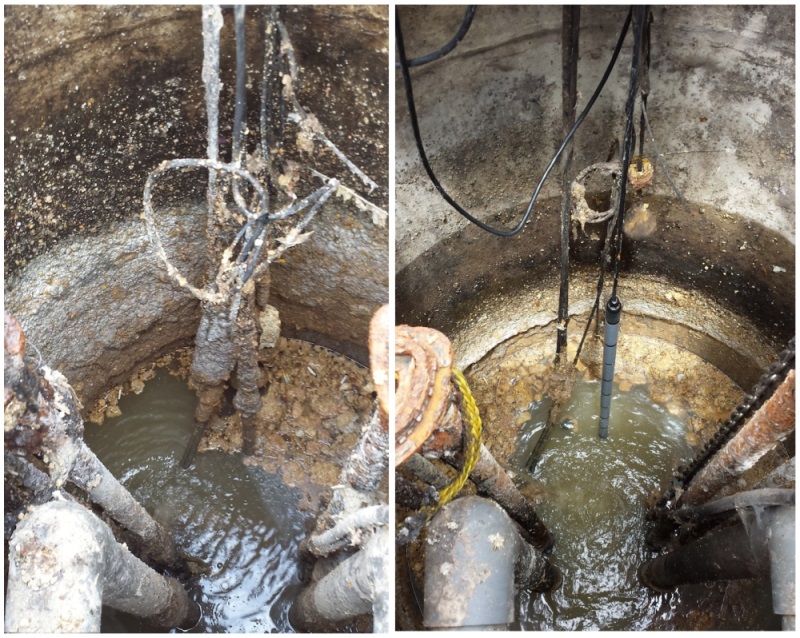Doesn’t grease buildup stop the FOGRod working?
It’s often the first question asked by someone who works with lift stations. The FOGRod should be hung in the turbulent part of the well, near the inflow (but not directly under it). In this part of the well the grease is all broken up and causes a lot less problems than the grease in the quietest part of the well – where the floats are usually sitting.
The turbulence and agitation of the rod keeps it cleaner – but of course, grease still builds up on the rod. Because the grease is broken up, liquid still gets through to allow an electrical connection between the wastewater and the metal contacts on the FOGRod.
Here’s a bad well in Tennessee. The photos show just after installation and around two months after the last clean. The FOGRod is still working fine in the left hand photo!

Eventually the buildup does get so bad that the measurements are affected. The LIT detects these problems and provides a visual alarm as well as a relay contact closing (or opening) to give you a telemetry alarm (or an alarm on top of the panel). How long does it take before this happens? It depends on the well, the grease, the location of the FOGRod – but a typical guide is 3 months for a bad well, 12 months for an «average» well and never for some wells. And the key point is that the FOGRod can very easily be cleaned – using the cleaning pad or «squeegee» in the mounting bracket. It’s much easier to clean than floats.







 Wastewater Level LLC
780 Conrad Drive
Kalispell, MT 59901
+1 406 545 3023
Wastewater Level LLC
780 Conrad Drive
Kalispell, MT 59901
+1 406 545 3023
Sorry, comments for this entry are closed at this time.